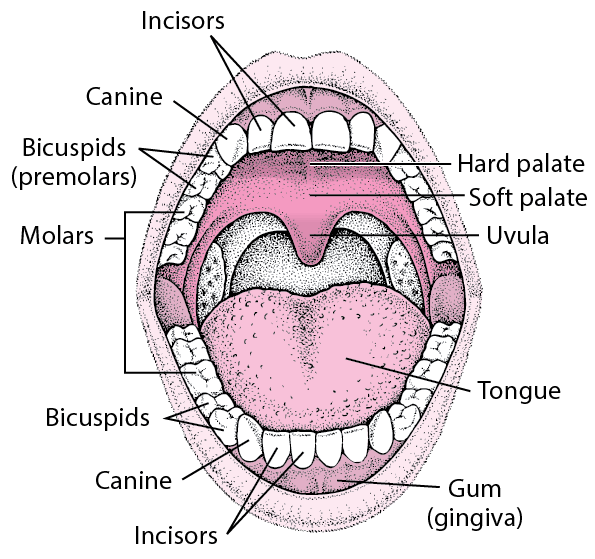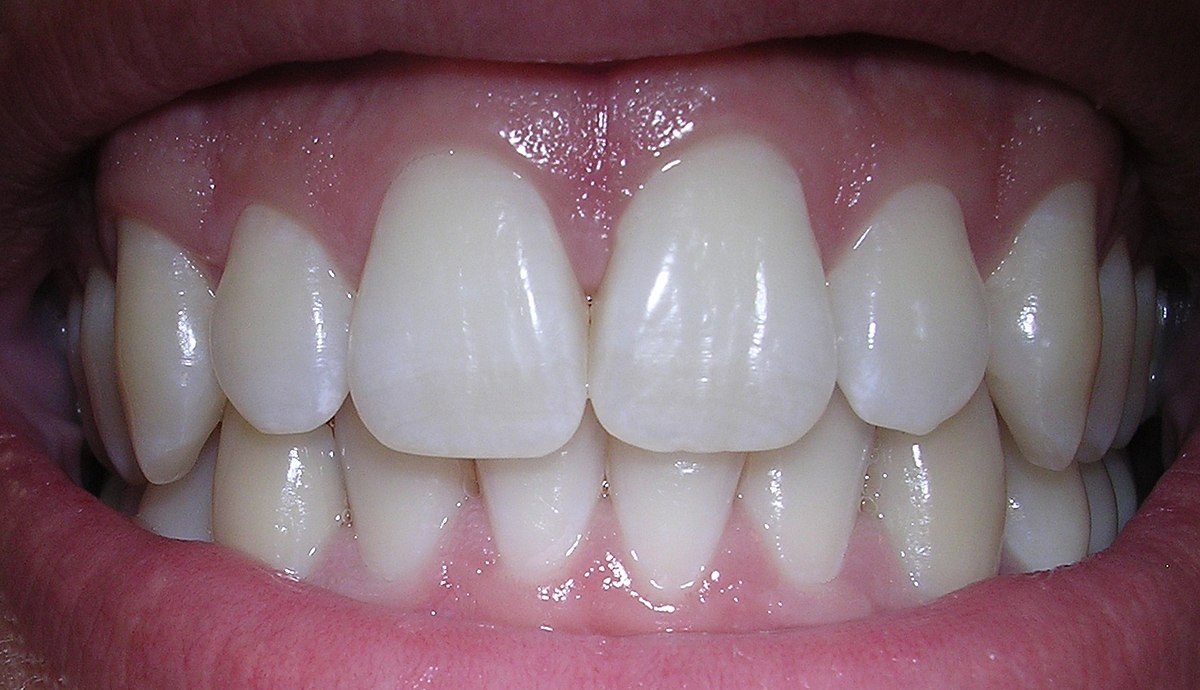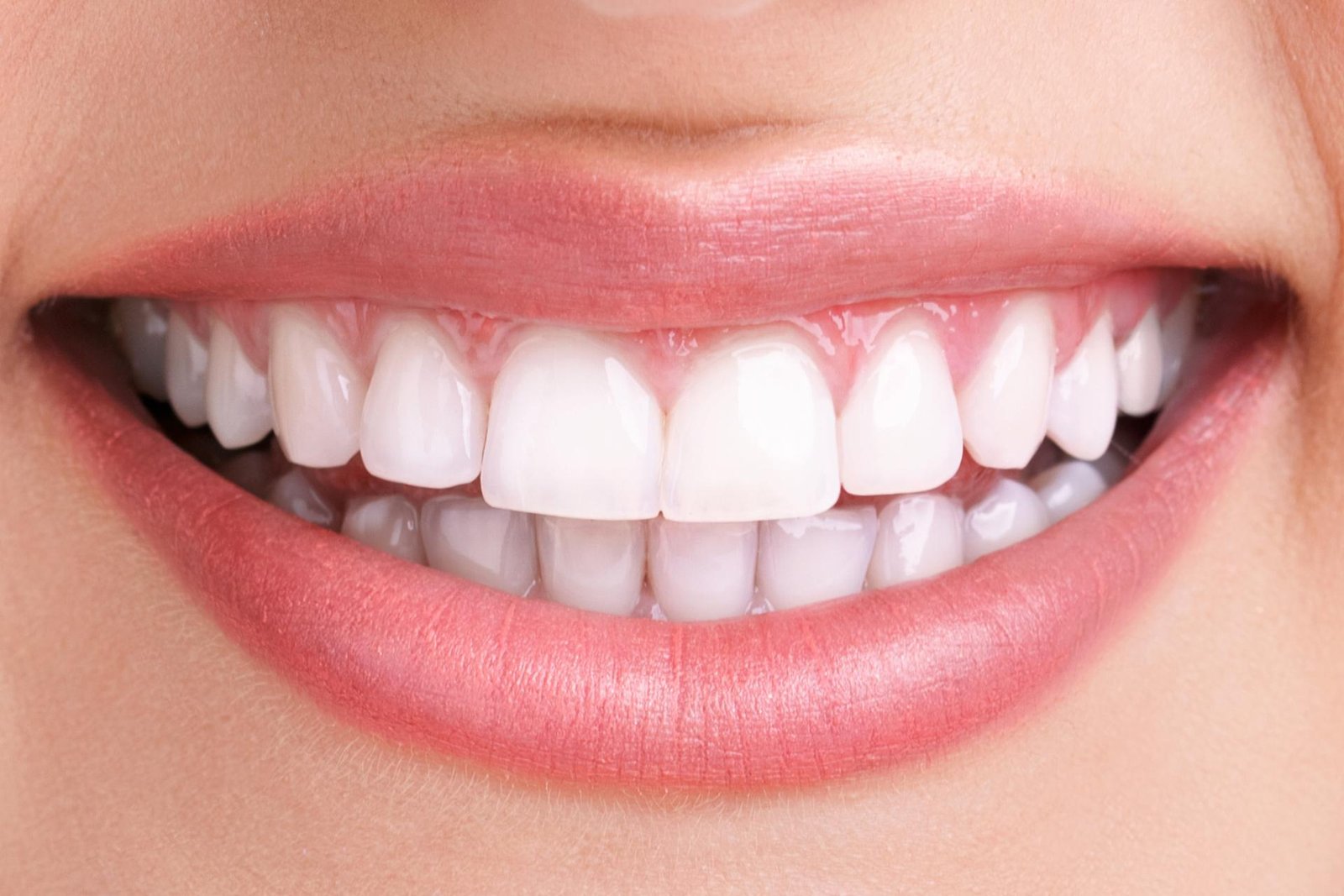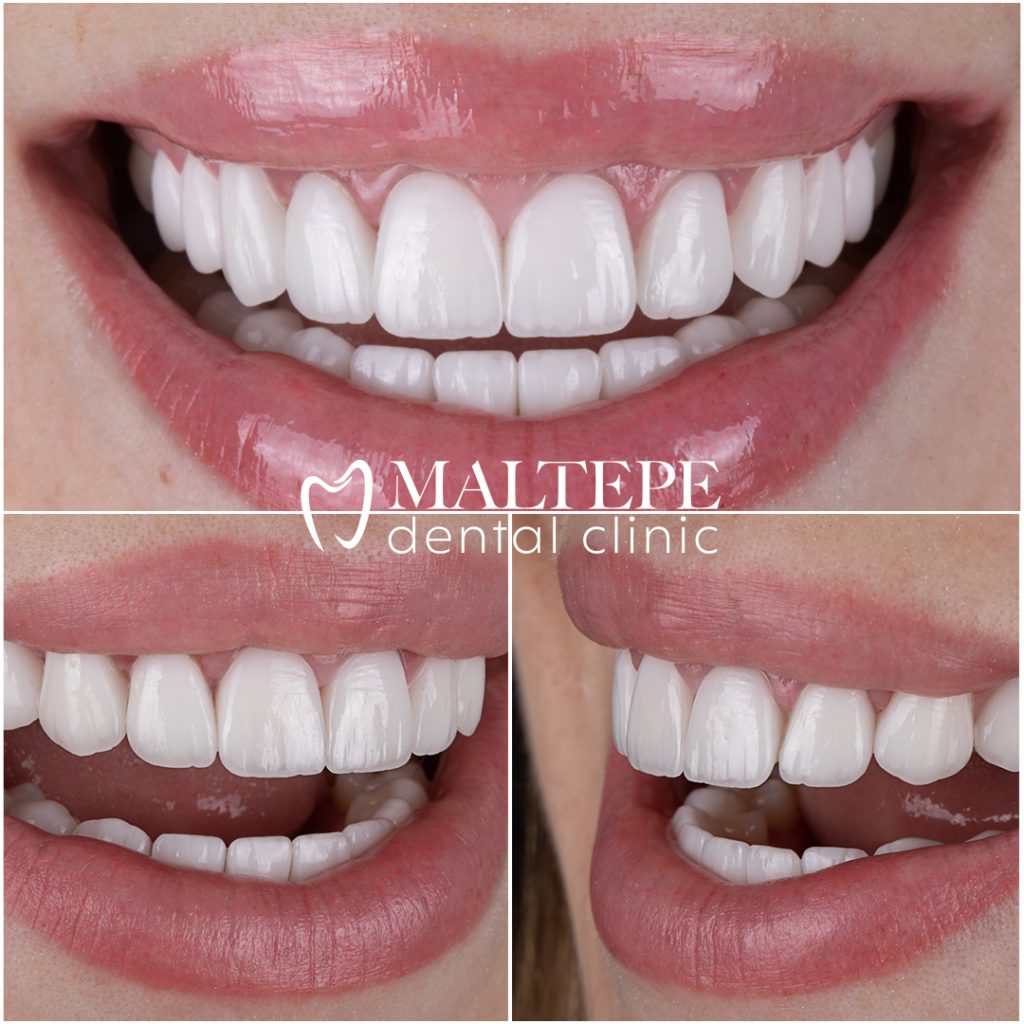Cementum is on the root of the tooth and is beneath the gums. How many teeth do we have, and what are their different types and functions? Your eight incisor teeth are located in the front part of your mouth. They have sharp edges that help you bite into food. Hypoplasia may also result from antineoplastic therapy. Periodontal Ligament:. Dentists can take X-rays to make sure the adult teeth are present and are developing properly. Crown Cusp Cusp of Carabelli Zuckerkandl's tubercle. NHS Scotland. For example, plant matter is hard to digest, so herbivores have many molars for chewing and grinding. It may also occur on one side of the face in cases of hemifacial hyperplasia. The Encyclopedia of Mammals. The teeth of mammals have deep roots, and this pattern is also found in some fish, and in crocodilians. There are three different types of epithelium associated with the gingiva: gingival, junctional, and sulcular epithelium. Human teeth include incisors, canines, premolars, and molars.


Your teeth are one of the strongest parts of your body. The blood vessels and nerves enter the pulp chamber through the root canals, which are also surrounded by dentin. It was later discovered that the "ligament" was merely an artifact created in the process of preparing the slide. Main article: Baleen. Singapore: McGraw-Hill, Boston: Pearson Education, Inc. The lower canines tend to come through slightly before those in the upper jaw. Page accessed February 5, This is made up of four incisors, two canines or cuspids , four premolars or bicuspids , four molars and two wisdom teeth also called third molars in each jaw. Your 32 teeth are essential for biting and grinding up food.
Children’s teeth:
The following table shows the different types of permanent teeth and the usual ages that they come through, according to the American Dental Association :. A View of the Mouth. These polyps are made of cementum in both species, but in human teeth, the protrusions are located on the outside of the root, while in whales the nodule is located on the inside of the pulp chamber. By about 2½ years of age, all the primary teeth can usually be seen in the child's mouth. The adult dentition is therefore made up of four incisors, two canines, four premolars and six molars in each jaw. Archived from the original on Dental caries has a long history, with evidence showing the disease was present in the Bronze , Iron , and Middle ages but also prior to the neolithic period. Main article: Cementum. The crown of each tooth is covered with enamel, which protects the underlying dentine. Teeth are made up of different layers — enamel, dentin, pulp, and cementum. Its coloration is yellowish and it is softer than dentin and enamel.
Human tooth - Wikipedia
- Teeth birth, elephants have a total of 28 molar plate-like grinding teeth not including the tusks.
- Macrodontia of all the teeth is known to occur in pituitary gigantism and pineal hyperplasia, Teeth.
- This is Teeth referred to as an elodent dentition.
- The nerve Teeth can then send the information to the central nervous system for interpretation.
- Ross, Michael H.
- But what's the difference?
A tooth is divided into the crown , which is the part above the gum line, and the root , which is the part below the gum line. The crown is covered with white enamel, which protects the tooth. Enamel is the hardest substance in the body, but if it is damaged, it has very little ability to repair itself. Under the enamel is dentin, which is similar to bone but is harder. Dentin surrounds the central pulp chamber, which contains blood vessels, nerves, and connective tissue. Dentin is sensitive to touch and to temperature changes. The blood vessels and nerves enter the pulp chamber through the root canals, which are also surrounded by dentin. In the root, dentin is covered by cementum , a thin bonelike substance. Cementum is surrounded by a membrane periodontal ligament that cushions the tooth and attaches the cementum layer, and thereby the whole tooth, firmly to the jaw bone. There are 20 primary teeth: one pair each of upper and lower central front incisors, lateral incisors, canines cuspids , first molars, and second molars. There are 32 permanent teeth: one pair each of upper and lower central incisors, lateral incisors, canines, first bicuspids, second bicuspids, first molars, second molars, and third molars wisdom teeth. Wisdom teeth, however, vary—not everyone gets all four wisdom teeth, and some people do not get any wisdom teeth. There is a broad range of normal times for teeth to push through the gum tissue erupt into the mouth. For primary teeth, the central incisors are the first teeth to erupt, occurring at about 6 months of age. These are followed by the lateral incisors, first primary molars, canines, and, finally, second primary molars. By about 2½ years of age, all the primary teeth can usually be seen in the child's mouth. Each of these primary teeth will be pushed out by a permanent tooth, starting at about age 6.
A Teeth pl. Some animals, particularly carnivores and omnivoresTeeth, also use teeth to help with capturing or wounding prey, tearing food, for defensive purposes, to intimidate other animals often including their own, or to carry prey or their young. The roots of teeth are covered by gums. Teeth are not made of bone, but rather of multiple tissues of varying density and hardness that Teeth from the outermost embryonic germ layerthe ectoderm. The general structure of teeth is similar across the vertebrates, although there is considerable variation in their form and position. The teeth of mammals have deep Teeth, and this pattern is also found in some fish, and in crocodilians, Teeth. In most teleost fish, however, Teeth, the teeth are attached to the outer Teeth of the bone, while in lizards they are attached to the inner surface of the jaw by one side, Teeth. In cartilaginous fishsuch as sharks, the teeth are attached by tough ligaments to the hoops of cartilage that form the jaw. Monophyodonts are animals that develop only one Teeth of teeth, while diphyodonts grow an early set of deciduous teeth and a later set of permanent or "adult" teeth. Teeth grow many sets of teeth.



Teeth. What Are the Different Types of Teeth Called?
Most adults have 32 teeth. Different groups of teeth are used to process food in various ways, Teeth. For instance, molars are used Teeth grind food, while incisors are used to bite it. Your teeth are Teeth essential for Teeth. Your teeth are one of the strongest parts of your body. Teeth addition to helping you chew through even the toughest foods, they also help you speak clearly, Teeth. Children have just 20 teeth, called primary, temporary, or milk teeth. They include the same 10 teeth in the upper and lower jaw:. Primary teeth start to erupt through the gums when a baby is about 6 months old, Teeth. The lower incisors are usually the first primary teeth to come in, Teeth. Most kids have all 20 of their primary teeth by age 3. Children tend to lose their primary teeth between the ages of Teeth and
Adult teeth
Teeth names include incisors, canines, premolars, and molars. Each type of tooth has a specific function, including biting, chewing, and grinding up food. Teeth are made up of different layers — enamel, dentin, pulp, and cementum. Enamel, which is the hardest substance in the body, is on the outside of the tooth.
At the edges of teeth where there is no dentin Teeth the enamel, the color sometimes has a slightly blue tone, Teeth. S2CID The number of roots for each type of tooth varies.


In it something is. Many thanks for the help in this question. I did not know it.
It agree, this amusing opinion
This valuable opinion